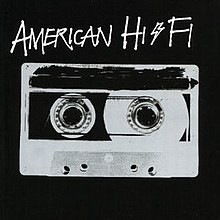Emo is a music genre characterized by emotional, often confessional lyrics. It emerged as a style of hardcore punk and post-hardcore from the mid-1980s Washington, D.C. hardcore scene, where it was known as emotional hardcore or emocore. The bands Rites of Spring and Embrace, among others, pioneered the genre. In the early-to-mid 1990s, emo was adopted and reinvented by alternative rock, indie rock, punk rock, and pop-punk bands, including Sunny Day Real Estate, Jawbreaker, Cap'n Jazz, and Jimmy Eat World. By the mid-1990s, Braid, the Promise Ring, and the Get Up Kids emerged from Midwest emo, and several independent record labels began to specialize in the genre. Meanwhile, screamo, a more aggressive style of emo using screamed vocals, also emerged, pioneered by the San Diego bands Heroin and Antioch Arrow. Screamo achieved mainstream success in the 2000s with bands like Hawthorne Heights, Silverstein, Story of the Year, Thursday, the Used, and Underoath.

"The Rock Show" is a song by American rock band Blink-182 for the group's fourth studio album, Take Off Your Pants and Jacket (2001). It was released as the lead single from the album on May 7, 2001. The track was composed primarily by bassist Mark Hoppus about meeting a girl at a rock concert. It was inspired by the band's early days touring punk rock clubs, mainly Soma in their hometown of San Diego.

Veruca Salt is an American alternative rock band founded in Chicago in 1992 by vocalist-guitarists Nina Gordon and Louise Post, drummer Jim Shapiro, and bassist Steve Lack. They are best known for their first single, "Seether", which was released on the 1994 album American Thighs. That success was followed up with 1997's Eight Arms to Hold You. By 1998, Post was the only original member still in the band and continued on with other musicians. Veruca Salt released the album Resolver in 2000 and the album IV in 2006. After a hiatus in 2012, the band reformed with its original lineup. Their fifth studio album, Ghost Notes, was released in 2015.
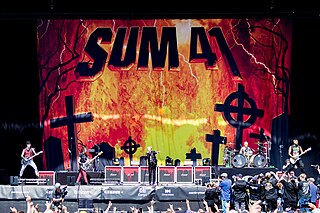
Sum 41 is a Canadian rock band from Ajax, Ontario. The band was formed in 1996 and consists of Deryck Whibley, Dave Baksh, Jason McCaslin, Tom Thacker, and Frank Zummo.
Alternative rock is a category of rock music that evolved from the independent music underground of the 1970s. Alternative rock acts achieved mainstream success in the 1990s with the likes of the grunge subgenre in the United States, and the Britpop and shoegaze subgenres in the United Kingdom and Ireland. During this period, many record labels were looking for "alternatives", as many corporate rock, hard rock, and glam metal acts from the 1980s were beginning to grow stale throughout the music industry. The emergence of Generation X as a cultural force in the 1990s also contributed greatly to the rise of alternative music.
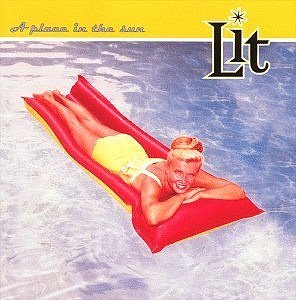
A Place in the Sun is the second studio album by the American rock band Lit, released on February 23, 1999.
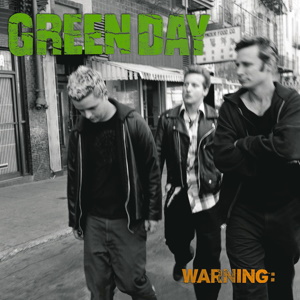
Warning is the sixth studio album by the American rock band Green Day, released on October 3, 2000, by Reprise Records. Building upon its predecessor Nimrod (1997), it eschewed the band's trademark punk rock sound and incorporated acoustic elements and pop and folk styles. Lyrically, the album contains more optimistic and inspirational themes in comparison to the band's earlier releases. Warning was also Green Day's first album since Kerplunk (1991) that was not produced by Rob Cavallo, although he did have a hand in its production and was credited as executive producer.
Pop-punk is a rock music fusion genre that combines elements of punk rock with power pop or pop. It is defined by its fast-paced, energetic tempos, and emphasis on classic pop songcraft, as well as adolescent and anti-suburbia themes. It is distinguished from other punk-variant genres by drawing more heavily from 1960s bands such as the Beatles, the Kinks, and the Beach Boys. The genre has evolved throughout its history, absorbing elements from new wave, college rock, ska, hip hop, emo, boy band pop and even hardcore punk and metalcore. It is sometimes considered interchangeable with power pop and skate punk.
Ska punk is a fusion genre that mixes ska music and punk rock music. Ska punk tends to feature brass instruments, especially horns such as trumpets, trombones and woodwind instruments like saxophones, making the genre distinct from other forms of punk rock. It is closely tied to third wave ska which reached its zenith in the mid-1990s.

American Thighs is the 1994 debut studio album by American alternative rock band Veruca Salt. The album features the single "Seether".

This article is an overview of the major events and trends in popular music in the 2000s.
Headstones is a Canadian punk-influenced rock band that was formed in Kingston, Ontario in 1989, broke up in 2003, and then reunited in 2011. Consisting of vocalist Hugh Dillon, guitarist Trent Carr, bassist Tim White, keyboardist Steve Carr and Jesse Labovitz on drums, and a reputation for high energy, 'more rock less super shock' stage presence, and interaction with the audience, they frequently draw capacity crowds at mid-sized venues. Their songwriting tackles many serious and controversial topics. Between 1996 and 2016, Headstones were among the top 150 best-selling Canadian artists in Canada and among the top 35 best-selling Canadian bands in Canada.

American Hi-Fi is an American rock band formed in Boston, Massachusetts in 1998. The band consists of lead vocalist and rhythm guitarist Stacy Jones, lead guitarist Jamie Arentzen, bassist and backing vocalist Drew Parsons, and drummer Brian Nolan. Prior to the group's formation, Jones was well known for being a drummer in the successful alternative rock bands Veruca Salt and Letters to Cleo. American Hi-Fi has a close relationship with Miley Cyrus, whose band shares two members with American Hi-Fi. The group has a mixed musical style that includes influences from pop-punk, alternative rock, and power pop.

Tonight and the Rest of My Life is the debut album from Veruca Salt co-founder, Nina Gordon. The album was recorded with Bob Rock at his Maui recording studio.

"Flavor of the Weak" is a song by American rock band American Hi-Fi. The song was released as the first single from their self-titled debut album on December 22, 2000. It is the band's highest-charting single, reaching number 41 on the US Billboard Hot 100 and peaking within the top 50 in Italy, New Zealand, and the United Kingdom.

Stacy Glen Jones is an American musician, songwriter, and producer. He is currently the musical director and drummer for Miley Cyrus and Life of Dillon, and is also known for being the lead vocalist, rhythm guitarist, and primary songwriter of American Hi-Fi, and as the drummer for Letters to Cleo.
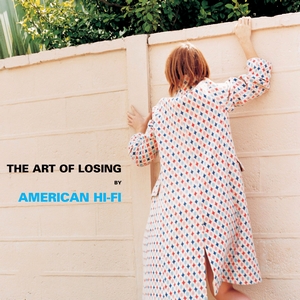
The Art of Losing is the second studio album by American rock band American Hi-Fi. It was released on February 25, 2003, through Island Records. While touring in support of their eponymous debut studio album (2001), the band wrote new songs on their tour bus. They initially recorded for the album at Sunset Sound Studio 2 in Hollywood, California, with producer Nick Launay, before moving to Media Vortex in Burbank, California, and Sage and Sound, in Hollywood of the state. It has been described as pop-punk, power pop, and rock, while received comparisons to the works of Blink-182 and Sum 41.

"Seether" is a 1994 single by American alternative rock band Veruca Salt.
Emo pop is a fusion genre combining emo with pop-punk, pop music, or both. Emo pop features a musical style with more concise composition and hook-filled choruses. Emo pop has its origins in the 1990s with bands like Jimmy Eat World, the Get Up Kids, Weezer and the Promise Ring. The genre entered the mainstream in the early 2000s with Jimmy Eat World's breakthrough album Bleed American, which included its song "The Middle". Other emo pop bands that achieved mainstream success throughout the decade included Fall Out Boy, the All-American Rejects, My Chemical Romance, Panic! at the Disco and Paramore. The popularity of emo pop declined in the 2010s, with some prominent artists in the genre either disbanding or abandoning the emo pop style.

All Killer No Filler is the debut studio album by Canadian rock band Sum 41, released on May 8, 2001. It was certified platinum in the United States, Canada, and in the UK.
